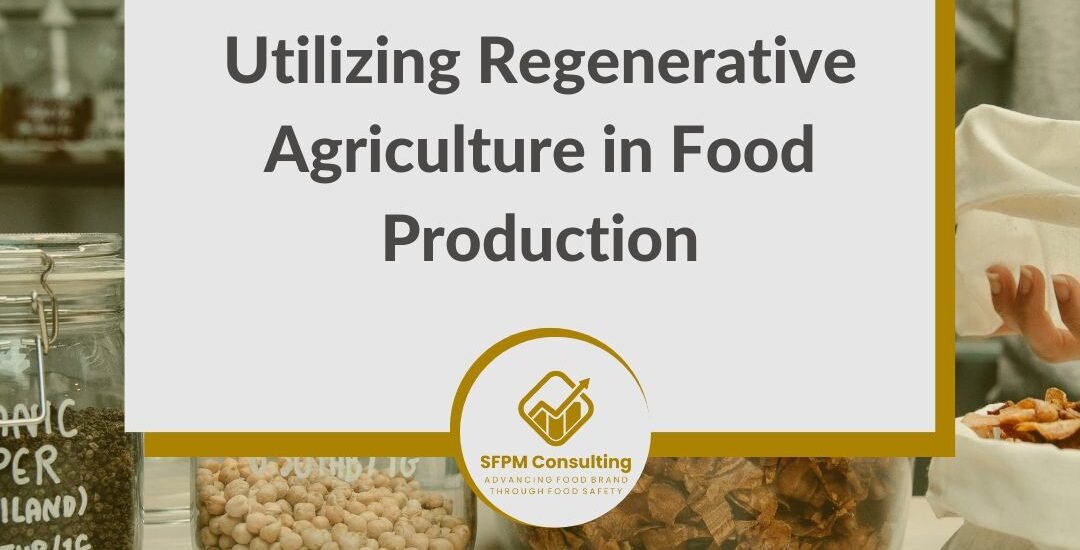Utilizing Regenerative Agriculture in Food Production
- November 6, 2023
- Posted by: mva
- Category: Food Safety

Regenerative agriculture is a growing movement in the food production field that seeks to improve crop yields by using natural or regenerative processes. The benefits of this approach include reducing environmental damage, conserving resources, and improving food safety. In this blog post, we will explore the definition of Regenerative agriculture, its benefits, and how it can be integrated into day-to-day production.
1. What is Regenerative agriculture?
Regenerative agriculture is a type of agriculture that takes into account the whole system, from soil to table. In practice, this means applying principles such as:
1. Returning nutrients and organic matter to the soil in an effective and sustained way
2. Minimizing or avoiding the use of synthetic inputs (fertilizers, pesticides, etc.)
3. Using methods like grazing or beekeeping that help maintain natural ecosystems and cycles in place
4. Reducing food waste throughout the production process
2. What are the benefits of Regenerative agriculture?
Regenerative agriculture is an agricultural production system that restores or enhances the natural processes of soil, water, and plants to improve environmental quality. The benefits of regenerative farming include:
1. Reduced environmental impact: Regenerative practices result in reduced greenhouse gas emissions and decreased use of synthetic inputs like fertilizers and pesticides.
2. Improved soil health: Regenerative practices help restore depleted soils by adding organic matter and improving drainage and fertility levels. This results in increased crop yields while reducing reliance on chemical fertilizer applications.
3. Enhanced biodiversity: By restoring natural ecosystems, regenerative farming helps preserve important plant species that provide food for humans and wildlife alike.
3. How can Regenerative agriculture be used in day-to-day production?
Regenerative agriculture is a type of sustainable agriculture that uses natural or artificial methods to restore and improve the function of ecosystems in agricultural landscapes. This approach has several benefits, including reducing environmental impact, improving soil quality, increasing crop yields, and enhancing biodiversity.
Regenerative agriculture can be used in day-to-day production by integrating it into existing systems such as irrigation, pest management, harvesting, storage and transportation. For example:
1) Irrigation: By using rainwater capture and infiltration techniques (such as green roofs), irrigating crops with stormwater instead of freshwater can reduce water usage by up to 50%. In addition, this method helps prevent flooding and improves air quality because pollutants are eliminated before they reach waterways.
2) Pest Management: Using beneficial insects or other predators to control pests reduces the need for chemical pesticides or herbicides while improving plant health.
3) Harvesting: Regenerative practices like agroforestry can help increase yields while reducing labour costs due to increased fruit size and decreased need for pruning or weeding.
Conclusion
Regenerative food technologies have the potential to help address some of the world’s most pressing food security concerns. They allow farmers to produce more food with less environmental harm, by creating new ways of capturing and recycling nutrients from crops and wasted biomass. What do you think about regenerative food production?
